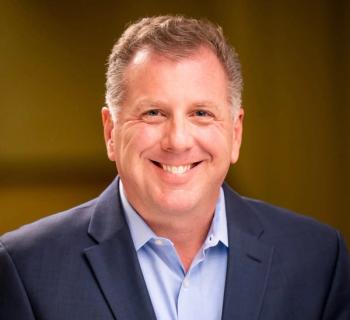
Pioneering the Fight Against Physician Burnout
Geeta Nayyar, M.D., MBA: Who were the pioneers in this space? So we know Mayo Clinic has done a lot in this area. Are there any other pioneers in this space that you all look to as cheerleaders who are really blazing the trail for us?
Janae Sharp: I like a lot of people because I’ve been looking for solutions. There are people who can automate scheduling where you can say, “OK, what’s really happening in this person’s life, how is their behavior changing?” And you can use something like artificial intelligence to inform your decision making, so the person who is doing the scheduling doesn’t have so much stress. There are so many tools, so I feel like we can be here all day making a list.
Rasu Shrestha, M.D., MBA: I’ll give you a specific example. As we talked about earlier, I’m new in my role as chief strategy officer at Atrium Health, with 50 hospitals across the North and South Carolina areas, and we just acquired another hospital group down in Georgia in Navicent Health. So we are clearly a hospital organization that is continuing to grow, which is the trend across the board.
And what was refreshing for me was the first week in my job, we had a senior physician council meeting. And this is with the CEO, me, and the chief medical officer in the room with about 16 of the top physician leaders across the organization. And the No. 1 topic of discussion at that highest level was on physician burnout. So it really does start at the top. The mission statement for the Atrium Health organization is Health, Hope, and Healing for All. And it’s that level of empathy that we need to bring to the discussions at the very highest level, so that we’re able to really call out the specifics of the issues at hand and then get to the solutions that we need to be going for.
Geeta Nayyar, M.D., MBA: Well, it sounds like we should all get a job at Atrium Health.
Janae Sharp: Rasu gave us an ad for Atrium Health.
Geeta Nayyar, M.D., MBA: That’s very encouraging to know that in hospital systems that perhaps aren’t even out there as pioneers, it’s being discussed at the C-suite. Heather, do you have any examples of pioneers in this space that you guys have worked with that are trailblazing in this area?
Heather Staples Lavoie: Sure. So Paladina Health is a direct primary care organization, and I think they rightly understand that 85 percent, 90 percent of healthcare is driven by primary care. And so they have a very strong focus on the cultural health in their organization and what they can do to help support physicians and include them in the design of the clinical system. So they certainly are one, and I think they are working hard to preserve the physician/patient relationship in a unique way by providing more direct access to the physician. But also, I think they monitor and measure the physicians differently, so that they take some of the treadmill pressure off of the doctors as well.
I think we were talking about this a little bit earlier, but physicians having a greater sense of control over their day, over their work — that on its own relieves some of the feelings of burden. It certainly helps them to feel like they’re thriving a lot more in their environment. And so giving back some of that control is what they’re really trying to do with the physicians and their organization.
We’ve seen that also with VillageMD, where they’ve had great success. We work with sort of a local branch in New Hampshire, and they’ve had great success in recruiting physicians out of some of the bigger hospital organizations because they feel like they’re valued. They have great control over their day. They have more resources in the practice. They have integrated behavioral health, they have social workers, they have nutritionists. And so there’s more of a team that supports the physician. When there are challenges with a patient, they can turn to other team members to help that patient as well. Everything doesn’t fall onto them. And because they feel more supported by a team, they’re much happier. And so they have great retention and great recruitment in a time where it’s really tough to bring physicians on board. There’s a real shortage, and it’s tough to keep physicians satisfied, and they’ve had great success.
Janae Sharp: I love what you said about the treadmill effect and also about people who have good retention. Because I think a lot of times we look at people who are leaders. Mayo Clinic has published a lot, but let’s look long term. Are they funding their programs and their findings? I always want to say to follow the money and look at employee retention, look at how physicians are after your groundbreaking study. I don’t know. I wouldn’t say anything specific, but I’d be willing to wager that many of these things that are supposedly groundbreaking don’t actually lead to better physician life long term.
Navigate the digital transformation with confidence.
Reduce Physician Burnout








































